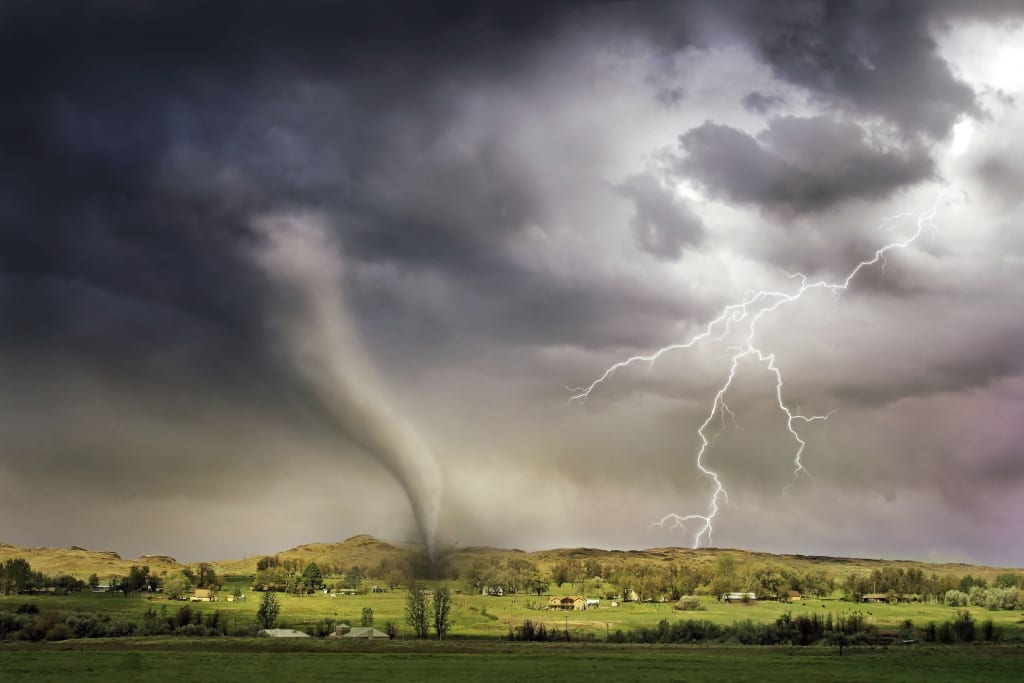Tornado Hit an Active Volcano
Tornado Hit an Active Volcano

In this scenario, we explore what would happen if a tornado hit an active volcano, as well as the potential consequences of a hurricane colliding with a volcano.
Tornadoes are powerful storms that form within supercell thunderstorms. They require specific atmospheric conditions, including wind shear and an updraft. While tornadoes and volcanoes rarely occur in the same geographic location, there are regions where the possibility of their collision increases, such as Italy, which experiences both tornadoes and has active volcanoes like Mount Etna and Mount Stromboli.
If a tornado were to hit an active volcano, the combination would be catastrophic. The tornado would pick up fire, smoke, and volcanic ash from the eruption, creating a spinning vortex of destruction. The volcanic ash, which consists of microscopic shards of basaltic glass, propelled at tornado speeds, would have a sandblasting effect on anything in its path. The lava, depending on the type of volcano, may not spread very far due to its viscosity but would pose significant dangers to the surrounding area during a violent eruption.
A tornado striking a volcano like Mount Vesuvius, known for its devastating eruption in ancient times, would result in unimaginable destruction. The lava nato, as it could be called, would spread hot ash, magma, and hardened lava, setting everything ablaze. Debris, hail, and hardened lava would rip through structures and cause widespread devastation. The core of the lava nato could reach temperatures of up to 1093 degrees Celsius, burning anything it touches.
On the other hand, volcanoes can create their own weather. As the hot gases and molten lava are expelled from the volcano, they rapidly increase the surrounding temperature, causing cold air to rise and form a column, resulting in cloud formations. This phenomenon is similar to what happened during the California wildfires, where the intense heat created a pyrocumulonimbus cloud that led to a tornado. Similarly, a volcano could generate its own tornado-like vortex under specific weather conditions.
If a hurricane were to collide with an active volcano, the volcano would have little effect on the hurricane itself. Hurricanes are significantly larger and longer-lasting than tornadoes, often spanning hundreds of kilometers. While an active volcano could potentially make a hurricane slightly stronger or spread its volcanic ash further, the volcano would have minimal impact on the hurricane's overall behavior.
In summary, the collision of a tornado with an active volcano would create a catastrophic event known as a lava nato, resulting in widespread destruction from fire, smoke, ash, and lava. However, hurricanes and volcanoes would have limited interactions, with the volcano having little influence on the hurricane's behavior.
It's important to note that while these scenarios are theoretically possible, they are rare occurrences. The primary focus should be on monitoring and preparedness measures to mitigate the impacts of natural disasters like volcanic eruptions, tornadoes, and hurricanes.
In the face of such rare and extreme events, effective disaster management becomes paramount. This includes early warning systems, evacuation plans, and coordination among various emergency response agencies. Monitoring volcanic activity and weather patterns becomes crucial to detect any potential signs of convergence between tornadoes, hurricanes, and volcanic eruptions.
Additionally, public education and awareness play a vital role in ensuring that communities are well-informed about the risks associated with these natural disasters. Providing clear guidelines on evacuation procedures, safety measures, and emergency supplies can help save lives and minimize injuries.
Ultimately, by prioritizing disaster preparedness and response, we can work towards minimizing the loss of life and property, fostering resilience in affected communities, and ensuring a more sustainable future in the face of these formidable geological and meteorological forces.
About the Creator
Enjoyed the story? Support the Creator.
Subscribe for free to receive all their stories in your feed. You could also pledge your support or give them a one-off tip, letting them know you appreciate their work.





Comments
There are no comments for this story
Be the first to respond and start the conversation.